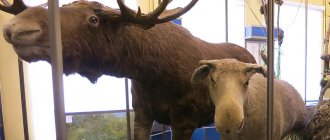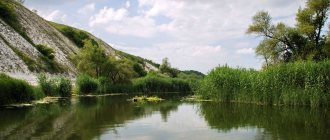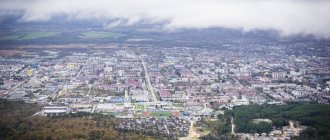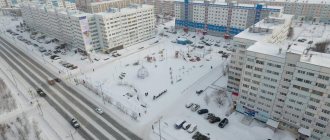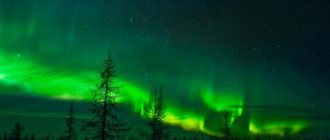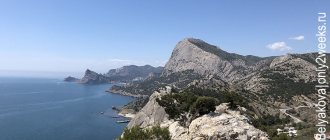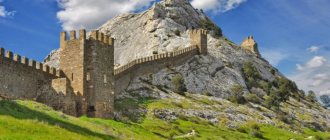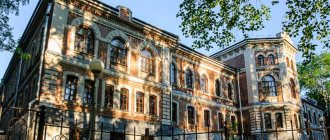| City of Sredneuralsk
| Coat of arms |
| A country | Russia, Russia |
| Subject of the federation | Sverdlovsk regionSverdlovsk region |
| Urban district | Sredneuralsk |
| Coordinates | 56°59′00″ n. w. 60°28′00″ E. d. / 56.98333° n. w. 60.46667° E. d. / 56.98333; 60.46667 (G) [www.openstreetmap.org/?mlat=56.98333&mlon=60.46667&zoom=12 (O)] (Z)Coordinates: 56°59′00″ N. w. 60°28′00″ E. d. / 56.98333° n. w. 60.46667° E. d. / 56.98333; 60.46667 (G) [www.openstreetmap.org/?mlat=56.98333&mlon=60.46667&zoom=12 (O)] (I) |
| Chapter | Tarasov Boris Alexandrovich[1] |
| Based | in 1931 |
| Former names | SUGRES village |
| City with | 1966 |
| Square | 83.8 km² |
| Center height | 252-278 |
| Population | ↗22,574[2] people (2016) |
| Density | 269.38 people/km² |
| Agglomeration | Ekaterinburgskaya |
| National composition | mostly Russians |
| Confessional composition | predominantly Orthodox Christians |
| Names of residents | Central Urals, Central Urals |
| Timezone | UTC+5 |
| Telephone code | +7 34368 (coincident with the city code of V. Pyshma) |
| Postal codes | 624070 and 624071 |
| Vehicle code | 66, 96, 196 |
| OKATO code | [classif.spb.ru/classificators/view/okt.php?st=A&kr=1&kod=65420505 65 420 505] |
| Official site | [sredneuralsk.midural.ru/ralsk.midural.ru] |
| Sredneuralsk Moscow |
Ekaterinburg Sredneuralsk |
Audio, photo and video
on Wikimedia Commons
K: Settlements founded in 1931
Sredneuralsk
- a city (since 1966) in Russia, until 1996 it was subordinate to the city of Verkhnyaya Pyshma, Sverdlovsk Region, now - an independent municipal entity "Urban District of Sredneuralsk", which also includes neighboring settlements located along the shores of Lake Isetskoye: the villages of Koptyaki and Murzinka, the village Brick[3]. Satellite city of Yekaterinburg.
Located 16 km northwest of Yekaterinburg and 8 km from the city of Verkhnyaya Pyshma[4], on the shores of Lake Isetskoe, on the eastern slope of the Middle Urals.
Story
The settlement of Sredneuralsk was formed in connection with the start of construction of the Sredneuralsk State Regional Power Plant (SuGRES). The official date of formation is June 27, 1931, it received the status of a workers’ village on July 10, 1932, and was transformed into a city of regional subordination on February 17, 1966. It developed and grew as a city of power engineers in connection with the constant expansion of the material base of the Russian Ministry of Energy. The city-forming enterprise, Sredneuralskaya State District Power Plant, began producing industrial current on January 5, 1936.
Population[ | ]
| Population | ||||||
| 2010[12] | 2011[13] | 2012[14] | 2013[15] | 2014[16] | 2015[17] | 2016[18] |
| 20 771 | ↗20 804 | ↗21 069 | ↗21 434 | ↗21 706 | ↗22 383 | ↗23 087 |
| 2017[19] | 2018[20] | 2019[21] | 2020[22] | 2021[5] | ||
| ↗23 479 | ↗24 011 | ↗24 300 | ↗24 414 | ↗24 651 | ||
Geographical characteristics
Location
The city is located on a hill 252-278 m above sea level, the drainage basin is Lake Isetskoe with an area of 25 km² and a depth of up to 6 m, a remnant of the ancient river network, the shores of the lake are mostly flat and swampy, the eastern shore is partially steep. The lake is fed by 8 small rivers, one river flows out, the Iset, freezes in October, is freed from ice in early May, the ice thickness is 70-100 cm.
No movement of deep earth faults, one of which is located 2 km from the SUGRES area, is observed. The city is located in a zone of intense seismic impact with a force of less than 6 points. The main constituent rocks are granite and shales. The top layer of components is wood, crushed stone, sandy and loamy soils. Along Lake Iset there are marsh, lake-marsh and illuvial deposits. Represented by peat, loams, sands with a depth of occurrence from 2 to 6 m. The main soils are loams and sandy loams (0.5-1.5 m), many bulk (technogenic) soils, thickness of occurrence from 2 to 7 -mi m, as well as ash dumps with a thickness of 8 to 11 m. Groundwater - stratal-pore and fissure-type layers, are located at a depth of 0.1 to 7.8 m. No mineral reserves of industrial importance have been found in the administrative territory of the city .
The forests nearby the city are inhabited by: hares, moose, foxes, wolves, roe deer, lynx, wood grouse, black grouse, partridges; on the water - muskrat, wild ducks, seagulls; in reservoirs - pike perch, perch, pike, bream, carp, crucian carp, tench, roach, gudgeon, carp. The forests are mainly coniferous: pine, fir, larch with an admixture of birch, aspen, as well as wild bushes: raspberries, currants, rose hips, viburnum, rowan, bird cherry.
Climate
The climate is sharply continental, the maximum annual amplitude of temperature fluctuations is from −45° to +42 °C, the usual average temperature in January is −16 °, in July — +17.4 °. Permanent snow cover lasts 5 months - from December 10 to May 1, the annual precipitation rate is 430-500 mm, the height of the snow cover is 40 cm, the thickness of soil freezing is 1.8 m, complete thawing of the soil begins
June, the maximum duration of the solar period is 269 hours in July, the minimum in December is 213 hours, the predominant wind direction is western with an average speed of 3.6 m/sec.
Economy
In the first decade of Sredneuralsk’s existence, all industrial enterprises served the power plant. During the Great Patriotic War, several evacuated enterprises were located in Sredneuralsk. In 1960-1961, a winery was built; in 1970, construction of a poultry farm began, which became the second large enterprise in the city.
- Sredneuralsk GRES
- LLC Sredneuralsk Construction Management "Uralenergostroy"
- Branch of OJSC Concern "Uralelektroremont"
- CJSC Sredneuralsk Plant of Metal Structures also on its site: CJSC Capacitive and Reservoir Equipment Plant CJSC SUZMK ENERGO LLC Sredneuralsk Agricultural Machinery Plant CJSC Sredneuralsk Mechanical Repair Plant
- CJSC Sredneuralsky Precast Concrete Plant
- Sredneuralsk Asphalt Concrete Plant
- JSC Experimental Plant of Metrological Equipment
- CJSC Sredneuralsky Woodworking Plant
- LLC Sredneuralsk Management "Uralspetsenergomontazh"
- LLC Sredneuralsky Winery
- State Unitary Enterprise SO Poultry farm "Sredneuralskaya" (is the center of a network of poultry farms and has its own chain of branded stores "Kuriko" in the Sverdlovsk region)
- Sredneuralskaya sausage factory
- LLC Sredneuralsk Vegetable Oil Plant
- LLC Sredneuralsky fish farm
- LLC Sredneuralsky fish-breeding complex
Composition of the urban district[ | ]
| № | Locality | Type of settlement | Population | Administrative-territorial unit of the city of Verkhnyaya Pyshma |
| 1 | Brick | village | ↗67[12] | city of Sredneuralsk |
| 2 | Koptyaks | village | ↗217[12] | city of Sredneuralsk |
| 3 | Murzinka | village | ↗38[12] | city of Sredneuralsk |
| 4 | Sredneuralsk | city, administrative center | ↗23 889[5] | city of Sredneuralsk |
From the point of view of the administrative-territorial structure of the region, all 4 settlements of the urban district of Sredneuralsk are part of the “city of Verkhnyaya Pyshma”.
An excerpt characterizing Sredneuralsk
Along the lanes of Khamovniki, the prisoners walked alone with their convoy and carts and wagons that belonged to the guards and were driving behind them; but, going out to the supply stores, they found themselves in the middle of a huge, closely moving artillery convoy, mixed with private carts. At the bridge itself, everyone stopped, waiting for those traveling in front to advance. From the bridge, the prisoners saw endless rows of other moving convoys behind and ahead. To the right, where the Kaluga road curved past Neskuchny, disappearing into the distance, stretched endless rows of troops and convoys. These were the troops of the Beauharnais corps who came out first; back, along the embankment and across the Stone Bridge, Ney's troops and convoys stretched. Davout's troops, to which the prisoners belonged, marched through the Crimean Ford and had already partly entered Kaluzhskaya Street. But the convoys were so stretched out that the last convoys of Beauharnais had not yet left Moscow for Kaluzhskaya Street, and the head of Ney’s troops was already leaving Bolshaya Ordynka. Having passed the Crimean Ford, the prisoners moved a few steps at a time and stopped, and moved again, and on all sides the crews and people became more and more embarrassed. After walking for more than an hour the few hundred steps that separate the bridge from Kaluzhskaya Street, and reaching the square where Zamoskvoretsky streets meet Kaluzhskaya, the prisoners, squeezed into a heap, stopped and stood at this intersection for several hours. From all sides one could hear the incessant rumble of wheels, the trampling of feet, and incessant angry screams and curses, like the sound of the sea. Pierre stood pressed against the wall of the burnt house, listening to this sound, which in his imagination merged with the sounds of a drum. Several captured officers, in order to get a better view, climbed onto the wall of the burnt house near which Pierre stood. - To the people! Eka people!.. And they piled on the guns! Look: furs... - they said. “Look, you bastards, they robbed me... It’s behind him, on a cart... After all, this is from an icon, by God!.. These must be Germans.” And our man, by God!.. Oh, scoundrels!.. Look, he’s loaded down, he’s walking with force! Here they come, the droshky - and they captured it!.. See, he sat down on the chests. Fathers!.. We got into a fight!.. - So hit him in the face, in the face! You won't be able to wait until evening. Look, look... and this is probably Napoleon himself. You see, what horses! in monograms with a crown. This is a folding house. He dropped the bag and can't see it. They fought again... A woman with a child, and not bad at all. Yes, of course, they will let you through... Look, there is no end. Russian girls, by God, girls! They are so comfortable in the strollers! Again, a wave of general curiosity, as near the church in Khamovniki, pushed all the prisoners towards the road, and Pierre, thanks to his height, saw over the heads of others what had so attracted the curiosity of the prisoners. In three strollers, mixed between the charging boxes, women rode, sitting closely on top of each other, dressed up, in bright colors, rouged, shouting something in squeaky voices. From the moment Pierre became aware of the appearance of a mysterious force, nothing seemed strange or scary to him: not the corpse smeared with soot for fun, not these women hurrying somewhere, not the conflagrations of Moscow. Everything that Pierre now saw made almost no impression on him - as if his soul, preparing for a difficult struggle, refused to accept impressions that could weaken it. The train of women has passed. Behind him were again carts, soldiers, wagons, soldiers, decks, carriages, soldiers, boxes, soldiers, and occasionally women. Pierre did not see people separately, but saw them moving. All these people and horses seemed to be being chased by some invisible force. All of them, during the hour during which Pierre observed them, emerged from different streets with the same desire to pass quickly; All of them equally, when confronted with others, began to get angry and fight; white teeth were bared, eyebrows frowned, the same curses were thrown around, and on all faces there was the same youthfully determined and cruelly cold expression, which struck Pierre in the morning at the sound of a drum on the corporal’s face. Just before evening, the guard commander gathered his team and, shouting and arguing, squeezed into the convoys, and the prisoners, surrounded on all sides, went out onto the Kaluga road. They walked very quickly, without resting, and stopped only when the sun began to set. The convoys moved one on top of the other, and people began to prepare for the night. Everyone seemed angry and unhappy. For a long time, curses, angry screams and fights were heard from different sides. The carriage driving behind the guards approached the guards' carriage and pierced it with its drawbar. Several soldiers from different directions ran towards the cart; some hit the heads of the horses harnessed to the carriage, turning them over, others fought among themselves, and Pierre saw that one German was seriously wounded in the head with a cleaver. It seemed that all these people were now experiencing, when they stopped in the middle of a field in the cold twilight of an autumn evening, the same feeling of an unpleasant awakening from the haste that gripped everyone as they left and the rapid movement somewhere. Having stopped, everyone seemed to understand that it was still unknown where they were going, and that this movement would be a lot of hard and difficult things. The prisoners at this halt were treated even worse by the guards than during the march. At this halt, for the first time, the meat food of the prisoners was given out as horse meat. From the officers to the last soldier, it was noticeable in everyone what seemed like a personal bitterness against each of the prisoners, which had so unexpectedly replaced previously friendly relations. This anger intensified even more when, when counting the prisoners, it turned out that during the bustle, leaving Moscow, one Russian soldier, pretending to be sick from the stomach, fled. Pierre saw how a Frenchman beat a Russian soldier for moving far from the road, and heard how the captain, his friend, reprimanded the non-commissioned officer for the escape of the Russian soldier and threatened him with justice. In response to the non-commissioned officer's excuse that the soldier was sick and could not walk, the officer said that he had been ordered to shoot those who lag behind. Pierre felt that the fatal force that had crushed him during his execution and which had been invisible during his captivity had now again taken possession of his existence. He was scared; but he felt how, as the fatal force made efforts to crush him, a life force independent of it grew and strengthened in his soul. Pierre dined on a soup made from rye flour with horse meat and talked with his comrades. Neither Pierre nor any of his comrades talked about what they saw in Moscow, nor about the rudeness of the French, nor about the order to shoot that was announced to them: everyone was, as if in rebuff to the worsening situation, especially animated and cheerful . They talked about personal memories, about funny scenes seen during the campaign, and hushed up conversations about the present situation. The sun has long since set. Bright stars lit up here and there in the sky; The red, fire-like glow of the rising full moon spread across the edge of the sky, and a huge red ball swayed amazingly in the grayish haze. It was getting light. The evening was already over, but the night had not yet begun. Pierre got up from his new comrades and walked between the fires to the other side of the road, where, he was told, the captured soldiers were standing. He wanted to talk to them. On the road, a French guard stopped him and ordered him to turn back. Pierre returned, but not to the fire, to his comrades, but to the unharnessed cart, which had no one. He crossed his legs and lowered his head, sat down on the cold ground near the wheel of the cart and sat motionless for a long time, thinking. More than an hour passed. Nobody bothered Pierre. Suddenly he laughed his fat, good-natured laugh so loudly that people from different directions looked back in surprise at this strange, obviously lonely laugh. - Ha, ha, ha! – Pierre laughed. And he said out loud to himself: “The soldier didn’t let me in.” They caught me, they locked me up. They are holding me captive. Who me? Me! Me - my immortal soul! Ha, ha, ha!.. Ha, ha, ha!.. - he laughed with tears welling up in his eyes. Some man stood up and came up to see what this strange big man was laughing about. Pierre stopped laughing, stood up, moved away from the curious man and looked around him. Previously loudly noisy with the crackling of fires and the chatter of people, the huge, endless bivouac fell silent; the red lights of the fires went out and turned pale. A full moon stood high in the bright sky. Forests and fields, previously invisible outside the camp, now opened up in the distance. And even further away from these forests and fields one could see a bright, wavering, endless distance calling into itself. Pierre looked into the sky, into the depths of the receding, playing stars. “And all this is mine, and all this is in me, and all this is me! - thought Pierre. “And they caught all this and put it in a booth fenced off with boards!” He smiled and went to bed with his comrades.
